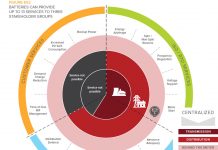Tom Konrad CFA

When Maxwell Technologies (NASD:MXWL) announced problems with its revenue accounting on March 7h, I took a look at the company’s reported Accounts Receivable (where early revenue recognition usually shows up) and concluded that management had underestimated the scope of the accounting problems. Convinced that there was more to come, I not only sold the stock, but took a short position.
On August 1st, Maxwell filed its restated annual reports for 2012 (including restatements of 2011), as well as statements for the first two quarters of 2013.
The Bad News: Revenue mis-statements were much larger than previously announced
The bad news for Maxwell investors was that I was right about the revenue mis-statement. The initial press release put the overstated revenues for 2011 and the first three quarters of 2012 at $6.5 million and $5.5 million ($11 million total,) while the actual restatement was $10 million and $9.2 million, respectively ($19.2 million total.)
To be fair, $2.5 million of the 2011 restatement involved replacing a reported general and administrative (G&A) expense with a contra-revenue account, which has no net effect on earnings. What apparently happened was that some returns or warranty costs were charged to overhead, rather than decreasing revenue as accounting rules say they should. This type of misreporting makes revenue growth look faster than in reality it should, but does not increase earnings. While it is a problem, it has less of an effect on company valuation than early reporting of revenue.
Because the effect of the $2.5 million re-categorization of G&A expense as contra-revenue has no effect on Maxwell’s earnings, the rest of this article does not include the re-categorized $2.5 million from 2011 as restated revenue.
Even excluding this $2.5 million, the total revenue restatement of $16.7 million was significantly greater ($5.7 million, or 52%) than the $11 million restatement the company’s initial press release told us to expect. If the $2.5 million re-categorization is included, the initial announcement understated the problem by $8.2 million, or 75%.
Still More To Come?

I initially predicted these larger revenue restatements by observing that Maxwell’s Accounts Receivable (AR) had been growing much more quickly than they should have in order to keep up with the company’s sluggish sales growth at the time. This can be seen in the chart above, where orange bars and dark blue line show what AR and revenue looked like before the restatement, the red lines (“adjusted AR”) and light blue line show what the restatement would have looked like if the initial press release had been accurate, and the brown bars and green line show AR and revenue as the company reported them on August 1st.
As you can see, recent growth in AR has been much lower than revenue growth (green line.) If anything, Maxwell management is now being extremely cautious about revenue recognition. This is unsurprising, as the company is currently being investigated by both the Department of Justice (DOJ) and Securities and Exchange Commission (SEC) in because of the previously misreported revenue: The company has every incentive to err on the side of caution.
I think it’s very unlikely the DOJ or SEC will find any more skeletons to be hiding in Maxwell’s accounting closet. With luck, the investigations (which have not yet involved company management) will not lead to significant expenses or management time going forward. While it’s appropriate for the DOJ and SEC to look into the particulars, it seems as if Maxwell has done a good job cleaning up the books and putting better controls in place, and it would be unfortunate if past problems were to interfere with a promising business.
Market Reaction
Despite the worse-than-forecast revenue restatement, the market reacted euphorically to Maxwell’s filings. MXWL stock soared $1.47 to $9.43 (18%) in the first day of trading after the announcement. I ascribe this euphoria to three factors, in decreasing order of importance.
- Maxwell’s revenues and earnings grew strongly over the past three quarters, flattered in part by the restatement itself.
- Many traders had sold the company’s stock short, and the strong results created a short squeeze.
- Investors were paying more attention to recent growth (which management highlighted) than previous disappointments.
The Good News: Recent Growth
As Maxwell’s CEO David Schramm stated in the conference call, year-on-year revenue growth has been 54% and 33% over the last two quarters (Q2 2013 and Q1 2013, respectively). Fourth quarter (Q4 2012) growth was 19% over the previous year.
The restatement contributed to this recent growth both by reducing reported revenue in the first two quarters of 2012, and increasing revenue in those quarters of 2013. Without the restatement, Q2 2013, Q1 2013, and Q4 2013 sales growth would have been 28% and 14% growth, and a 2% decline respectively compared to the previous years’ results.
Nonetheless, no matter how you slice it, revenue and earnings have been growing strongly over the last two quarters. The following chart show’s Maxwell’s earnings per share (EPS), before and after the effect of the restatement:

While the restatement has the effect of making recent results look stronger as compared to results from the previous year, it’s important to keep in mind that the restated results were restated to correct real accounting errors, not just to make Maxwell’s recent growth look good.
Short Squeeze
I was not the only analyst, trader or hedge fund manager to be surprised by the strength of Maxwell’s recent results. As of June 15th, 2.91 million shares were held short. That is 11% of the company’s float, or over seven days’ trading volume. Unlike myself, many shorts use significant margin, and a share price spike like the one yesterday can lead to margin calls which force them to cover, buying even as the stock is rising, and accelerating the ascent. I keep my short
positions relatively small to avoid being caught in such a short squeeze, and was not forced to cover.
I plan to cover my short position in the next few days, assuming the stock declines to something closer to what I consider Maxwell’s actual value. If it declines far enough, I may even go long again: I like the company’s business. Since I have yet to make these trades, I won’t reveal my current valuation of the company here, although I will give you much of the information which led to that valuation.
The Future
To determine what Maxwell is worth, we have to determine our expectations for Maxwell’s future earnings. Growth of ultracapacitor sales for automotive stop-start applications has been flat, but this has been driven by poor car sales in Europe, which are at a 20 year low. Stop-start idle elimination systems using Maxwell’s ultracapacitors are now available in more models, and their wider availability has offset the decline in overall auto sales.
The main source of Maxwell’s recent growth has been the hybrid bus business in China. accounting for 80% of sales in Q1 2013, and 65% in Q2 2013. We can expect softness in this segment as Maxwell’s Chinese customers await the release of new subsidies fro hybrid buses. These subsidies are widely expected, but have yet to be finalized, and it is anyone’s guess when that will happen. With the third quarter almost half over without an announcement, we can expect far fewer sales of ultracapacitors for Chinese buses in the third quarter than in the second.
The other major end market for ultracapacitors has been the wind market, which in the past has exceeded sales for hybrid buses. Global wind installation in 2013 are not expected to grow over 2012, but growth is expected to resume in 2014. Hence, while wind should be a source of long term growth in for Maxwell, it is unlikely to be a source of growth in the near term.
With hybrid bus demand falling in Q3 and stable wind sales, we can expect Maxwell’s third quarter revenues to be down from the second quarter, with earnings following suit. The fourth quarter could see growth resume once Chinese bus subsidies are in place.
Maxwell’s inventory levels at the end of the second quarter seem to echo my expectation of lower sales in Q3: they were down from the second quarter, and Maxwell’s CEO David Schramm forecast inventory levels to remain flat in Q3 during the recent conference call. Further, Q2 inventory was down from Q1 levels. Since every future sale has to pass through inventory, Maxwell’s management would be increasing inventory to meet this anticipated demand if they expected growth in Q3.

As you can see in the chart above, quarterly revenues have been growing much more quickly than quickly than accounts receivable or inventory. While increasing revenues relative to working capital items such as these can be a sign of increased efficiency, such efficiency gains are seldom this rapid. Most likely, Q2 (and possibly Q1) represented a short term revenue spike which will be reversed in Q3. The fact that Q2 revenues rose above their trend line just as Q2 inventory dipped below it increases my confidence that Q2 revenue growth represents a short term blip.
Longer term, Maxwell’s growth prospects are bright, as wind and bus markets return to growth, while Maxwell also begins to see significant sales in new markets such as their Engine Starting Module (ESM) for trucks, where the company has been making progress by getting the ESM adopted by two truck fleets.
Over the next two quarters, straight-line projections of revenue and earnings are likely to significantly overestimate Maxwell’s actual results.
Conclusion
As I said above, I’m not ready to reveal my own valuation of the company. I will say that the recent results are better than I expected, and I plan to cover my short position at a loss reflecting my higher current valuation of the company.
Analysts at Roth Capital were pleasantly surprised by Maxwell’s reported results. They raised their price target to $8.50, from $7, keeping their rating at neutral. I have not yet seen how other analysts have reacted, although average estimates for Maxwell’s 2014 EPS have dropped from $0.59 to $0.45 per share over the last week.
Disclosure: Short MXWL
This article was first published on the author’s Forbes.com blog, Green Stocks on August 6th.
DISCLAIMER: Past performance is not a guarantee or a reliable indicator of future results. This article contains the current opinions of the author and such opinions are subject to change without notice. This article has been distributed for informational purposes only. Forecasts, estimates, and certain information contained herein should not be considered as investment advice or a recommendation of any particular security, strategy or investment product. Information contained herein has been obtained from sources believed to be reliable, but not guaranteed.







